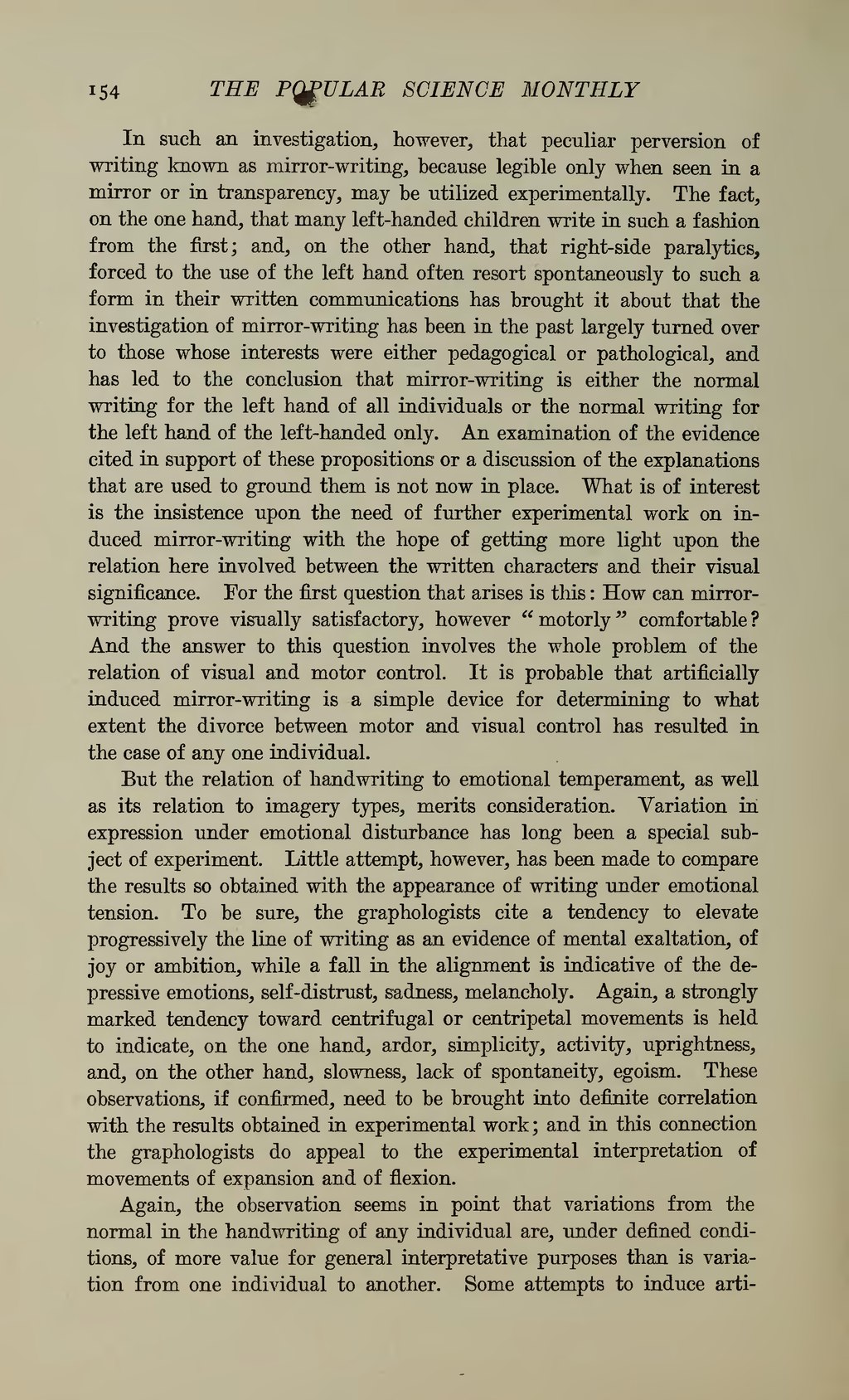In such an investigation, however, that peculiar perversion of writing known as mirror-writing, because legible only when seen in a mirror or in transparency, may be utilized experimentally. The fact, on the one hand, that many left-handed children write in such a fashion from the first; and, on the other hand, that right-side paralytics, forced to the use of the left hand often resort spontaneously to such a form in their written communications has brought it about that the investigation of mirror-writing has been in the past largely turned over to those whose interests were either pedagogical or pathological, and has led to the conclusion that mirror-writing is either the normal writing for the left hand of all individuals or the normal writing for the left hand of the left-handed only. An examination of the evidence cited in support of these propositions or a discussion of the explanations that are used to ground them is not now in place. What is of interest is the insistence upon the need of further experimental work on induced mirror-writing with the hope of getting more light upon the relation here involved between the written characters and their visual significance. For the first question that arises is this: How can mirror-writing prove visually satisfactory, however "motorly" comfortable? And the answer to this question involves the whole problem of the relation of visual and motor control. It is probable that artificially induced mirror-writing is a simple device for determining to what extent the divorce between motor and visual control has resulted in the case of any one individual.
But the relation of handwriting to emotional temperament, as well as its relation to imagery types, merits consideration. Variation in expression under emotional disturbance has long been a special subject of experiment. Little attempt, however, has been made to compare the results so obtained with the appearance of writing under emotional tension. To be sure, the graphologists cite a tendency to elevate progressively the line of writing as an evidence of mental exaltation, of joy or ambition, while a fall in the alignment is indicative of the depressive emotions, self-distrust, sadness, melancholy. Again, a strongly marked tendency toward centrifugal or centripetal movements is held to indicate, on the one hand, ardor, simplicity, activity, uprightness, and, on the other hand, slowness, lack of spontaneity, egoism. These observations, if confirmed, need to be brought into definite correlation with the results obtained in experimental work; and in this connection the graphologists do appeal to the experimental interpretation of movements of expansion and of flexion.
Again, the observation seems in point that variations from the normal in the handwriting of any individual are, under defined conditions, of more value for general interpretative purposes than is variation from one individual to another. Some attempts to induce arti-
